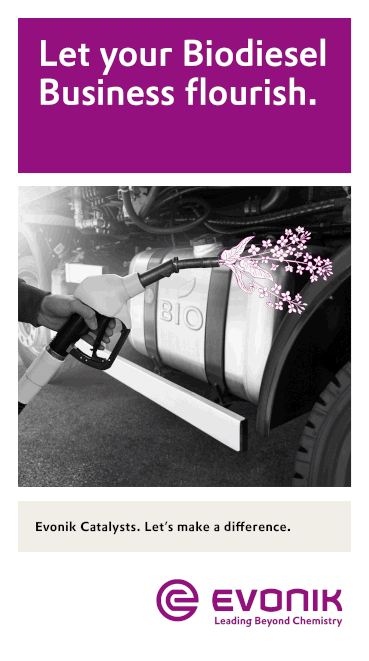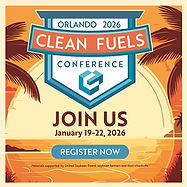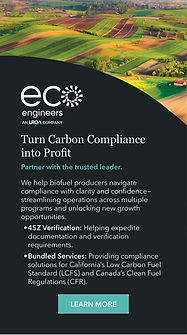Straddling 2 Worlds: Energy Abundance and the Clean-Energy Future
- Allen Schaeffer, Diesel Technology Forum
- Apr 22, 2022
- 3 min read
Today we are living in two worlds. One is of energy abundance brought to us by fossil fuels. The other is a world that envisions zero carbon and a clean-energy future. Where exactly does diesel technology fit in this picture? Some might say the past or nowhere, while others say the future and everywhere. Diesel uniquely and effectively straddles both these worlds, delivering everything that we need today while ready to play a role in the clean-energy future.

The vision of a future powered exclusively by clean and renewable energy is clear. The means and the details and timing of the path to get there are far less clear. Fifteen sectors of the global economy rely largely on diesel today. Fundamental changes to every global energy and economic sector won’t happen overnight. Geopolitical conflicts are now highlighting the fragility and uncertainty of energy and supply chains daily. That’s true for both for fossil fuels and the rare metals and elements that are essential for batteries and electrification strategies.
People and economies must live in the reality of the moment. Our decisions and expectations should not forsake available near-term opportunities in favor of longer-term potential solutions to make progress on climate change. The Biden administration has made significant commitments both in policy and public funding to accelerate the introduction of electrified technologies and essential infrastructure for transportation. It is also considering even tighter emissions standards for new trucks five years from now.
While electric and hydrogen technologies seem to hold real promise for decarbonizing some sectors of the economy, most manufacturers say these technologies are far from becoming mainstream in the near term, particularly for commercial trucks and off-road applications. Yet, many stakeholders and communities are calling for immediate changes. Herein lies the opportunity.
The existing older fleet of vehicles and equipment largely dominates the emissions profile today and will for decades to come. Policymakers need to think beyond the old paradigm of only setting tighter new-engine standards for the future and embrace other approaches that cut emissions faster and deliver benefits sooner. Accelerating the turnover of the existing fleet of older vehicles and equipment to this new generation of technology and using more renewable, biobased diesel fuels offers this tremendous opportunity.
As we recently testified to the U.S. EPA, the new generation of advanced diesel technology is a success story. Standard in commercial trucks on the road since 2011 and farm and construction equipment since 2014, it has achieved more than 98 percent reduction in nitrogen oxides (NOx) and particulate matter. Since 2011, this change in the trucking industry alone has translated into saving more than 20 billion gallons of fuel, along with associated emissions benefits (preventing 202 million metric tons of greenhouse gas emissions and 27 million metric tons of NOx emissions).
About half of all the big-rig, commercial trucks on the road today are of an older-generation technology without the benefit of advanced emissions controls. These are typically owned by small fleets and second- and third-generation independent truckers and will be on the road for a million miles or more. It would take 60 new trucks to equal the emissions of just one older truck. Now imagine the impact on communities where thousands of 15- and 20-year-old trucks were replaced in the next year with newer-generation advanced diesel trucks.
Our other major opportunity lies in renewable energy in the form of liquid fuels. Billions of gallons of renewable, biobased diesel fuels are used each year, 3 billion in 2021 alone. Imagine the opportunity for using more biobased diesel fuels in the millions of existing vehicles and equipment. This would not require any change other than the fuel. No need for new vehicles. No waiting on new infrastructure. The result is lower emissions—as much as 20 to 80 percent fewer compared to conventional diesel fuel, as well as cleaner air in neighborhoods and fewer greenhouse gas emissions.
Earth Day gives us a special opportunity to take stock in where we are, to celebrate our successes and make plans to do more for the future. We are in a challenging place. The crisis of climate change is headline news nearly every day, but it is a headline alongside horrors of a global pandemic and a deadly global war in Ukraine. There is a bold vision for a cleaner-energy future but getting there feels far from direct and certain. We know there is more that can and must be done.
If we want to make progress in this moment, progress toward cleaner air and greenhouse gas reductions, very good options are available. Replacing old diesel trucks with new ones and using more biobased diesel fuels are two available, affordable, and comparatively simple solutions that can deliver a full range of benefits now. That’s something we can all get behind this Earth Day—and every day.
Author: Allen Schaeffer
Executive Director, Diesel Technology Forum


































